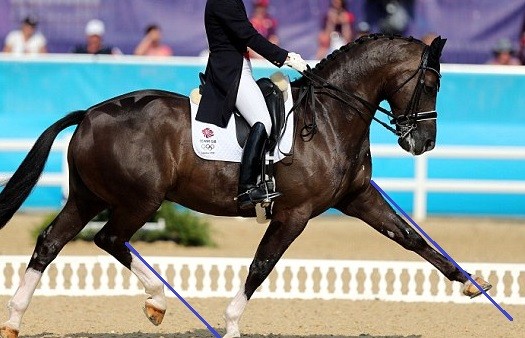
Effect of the seating style on the horse’s movement symmetry
Information about the influences of the rider’s seating style on the movement symmetry of the horse’s head and pelvis might help recognize low grade lameness. Rising trot gives the most asymmetry in the horse’s movement in trot and induces or reduces lameness. Sitting trot and two point seat have no effect on the movement symmetry
During this study the vertical movement of the head and pelvis of 26 horses were studied, using inertial sensors. All the horses were studied both ridden and unridden, on a straight line and both directions of a circle. The riders rode in rising trot, sitting trot and two point seat and the symmetry of the movements was compared in all conditions.
Only in rising trot systematic changes are seen in the movement symmetry of the horse. When the rider rises up in the stirrups a downward momentum was created in the horse’s pelvis counteracting the horse’s push off. This can induce a push off lameness and an increase in impact lameness in the leg that is in stand phase when the rider sits down. The asymmetries of the horse created by trotting on a circle counteract with the asymmetries created by the rider. This will lead to a horse that is even more symmetrical as when it was lunged. This might explain why we speak of rising trot on the ‘correct diagonal’. Rising on the ‘incorrect diagonal’ shows the highest asymmetry in movement.
Expert opinion by Annet Veen
This study can give us a good insight in how the rider influences a lame horse. It is good to keep this in might when a lame horse in evaluated under the saddle. Also an early low grade lameness can be evaluated as not being lame, when in fact it is lame but just reduced by the rider. It would be good to get more information about the effect of the rider on the horse’s movement symmetry to get even a better evaluation of the horse.
> From: Persson-Sjodin et al., PLoS One 13(4) (2018) e0195341. All rights reserved to 2018 Persson-Sjodin et al.. Click here for the online summary.


